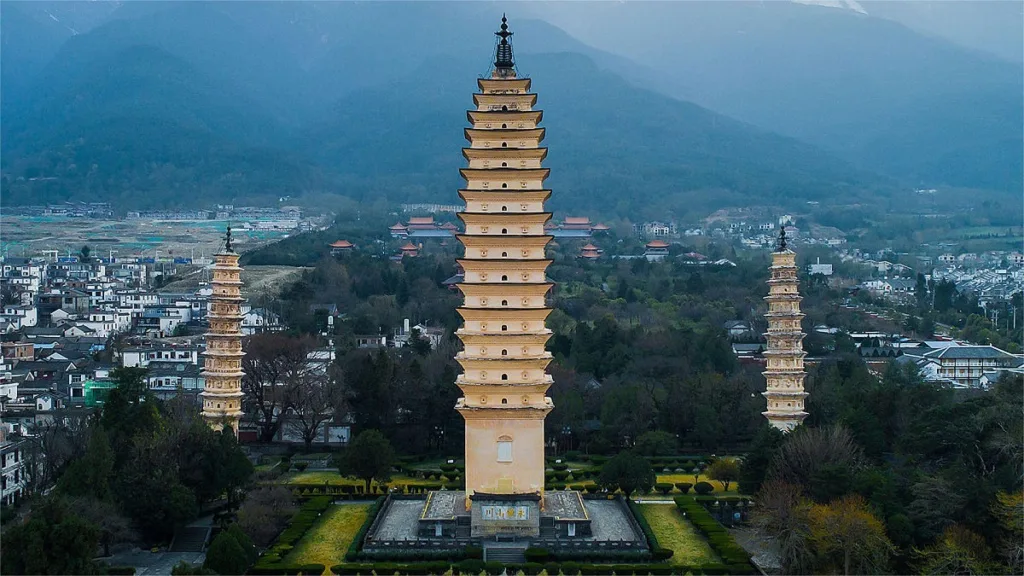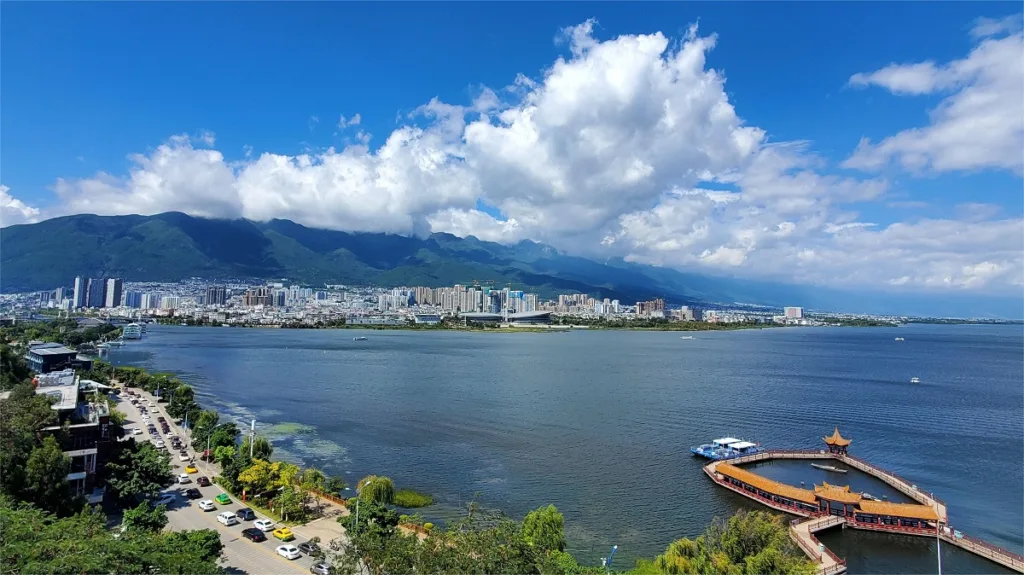Templo de las Tres Pagodas de Chongsheng - Entrada, horario de apertura, ubicación y aspectos más destacados


The Three Pagodas of Chongsheng Temple (崇圣寺三塔) form a magnificent architectural ensemble in Dali, Yunnan Province, China. This trio of towers consists of one large pagoda, known as the Qianxun Pagoda, flanked by two smaller pagodas. Each pagoda represents a distinct era of Chinese history and architectural style, contributing to the rich cultural heritage of the region.
The centerpiece of the trio is the Qianxun Pagoda, also referred to as the Qianxun Tower. It stands as a testament to the prosperity of the Nanzhao Kingdom during the reign of Quan Fengyou, dating back to the period between 823 and 859 AD. This imposing structure rises to a height of 69.13 meters and features a sixteen-tiered square design constructed with hollow bricks, showcasing the quintessential architectural style of the Tang Dynasty.
Flanking the Qianxun Pagoda are two smaller pagodas, collectively adding to the grandeur of the ensemble. These smaller pagodas, characterized by their conical profiles, embody the architectural aesthetics of the Song Dynasty. Built during the reigns of Duan Zhengyan and Duan Zhengxing, rulers of the Dali Kingdom between 1108 and 1172 AD, these twin pagodas stand 97 meters apart and reach a height of 42.19 meters each. They are both octagonal in shape and feature eight tiers with intricate eaves, exemplifying the exquisite craftsmanship of the Song Dynasty era.
Índice
- Información básica
- Ubicación y transporte
- Highlights of the Three Pagodas
- Attractions near the Three Pagodas
Información básica
| Duración estimada de la visita | 2 horas |
| Precio del billete | Admission: 75 RMB Admission + Round-Trip Shuttle Bus: 110 RMB |
| Horario de apertura | 7.30 – 18.30; Last admission: 17.30 |
| Número de teléfono | 0086-0872-2666158 |
Ubicación y transporte
The Three Pagodas of Chongsheng Temple are located approximately 1.5 kilometers northwest of the ancient city of Dali, with the majestic Cangshan Mountain‘s Yinglo Peak to the west and the tranquil Erhai Lake to the east. Positioned around 1500 meters from the base of the mountain, the pagodas enjoy a picturesque setting. Visitors can reach the temple by taking bus route 19 from the north gate of Dali Ancient City and disembarking at the “Three Pagodas Park” stop (三塔公园站).
Highlights of the Three Pagodas
Constrution Method

The positioning of the three pagodas is not merely architectural; it also carries historical and symbolic significance. The Qianxun Pagoda stands at the center, flanked by the two smaller pagodas to the north and south, creating a harmonious visual balance. They not only served religious purposes but also held practical significance in mitigating natural disasters. The region surrounding Dali was prone to water-related calamities, leading to the belief that the construction of the pagodas would appease dragons and ward off floods. Legends suggest that during their construction, layers of soil were piled around the pagodas, forming mounds resembling hills. It was only upon completion that the soil was gradually removed, revealing the magnificent towers. The scale of the project was immense. Even today, the village of Yinqiao in Dali, formerly known as “Ta Qiao Village,” serves as a reminder of this monumental undertaking.
Descubrimientos arqueológicos

In 1977, during a restoration project, an extraordinary discovery was made within the Qianxun Pagoda. Hidden within its structure were over 600 artifacts dating back to the Nanzhao and Dali periods, including Buddhist statues, manuscript sutras, and various cultural relics. Among these treasures was a remarkable gold statue weighing 1135 grams and standing at 0.24 meters tall. Additionally, numerous inscribed bronze tablets, Buddhist scriptures, bronze mirrors, and medicinal substances such as cinnabar, musk, and sandalwood were unearthed. These artifacts provide invaluable insights into the history, religion, and culture of the Nanzhao and Dali Kingdoms, enriching our understanding of this pivotal period in Chinese history.
Moreover, the surfaces of the pagodas’ bricks are adorned with a plethora of Sanskrit and Chinese Buddhist mantras, remnants of the esoteric teachings prevalent during the Nanzhao period. These inscriptions serve as tangible links to the spiritual practices and beliefs of ancient times, further enhancing the historical and cultural significance of the Three Pagodas of Chongsheng Temple.
Attractions near the Three Pagodas

Old Town of Dali

Erhaiyue Wetland Park

Caicun Village

Erhai Park

Zhang’s Garden
Atracciones de Dalí, Lugares históricos de Yunnan